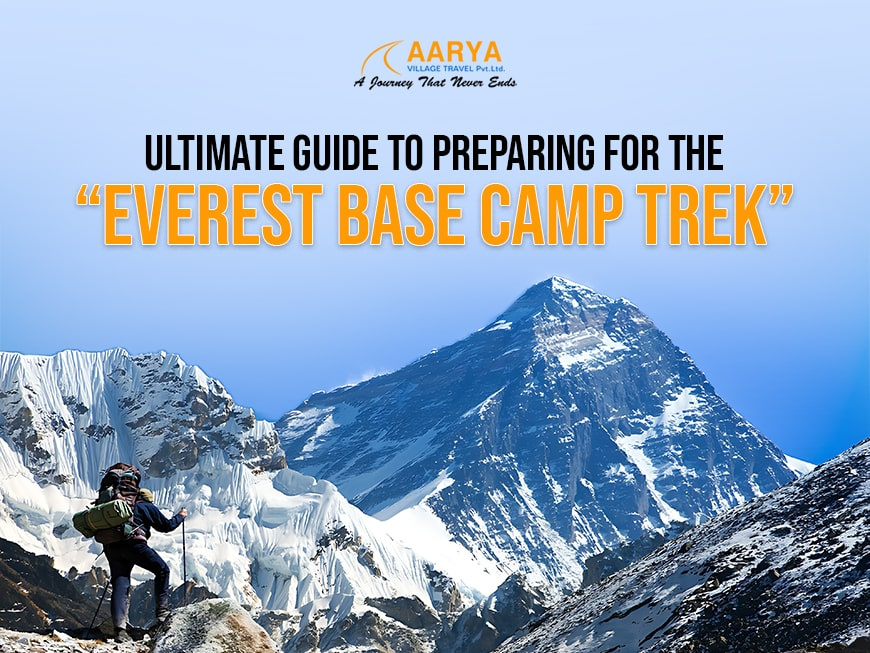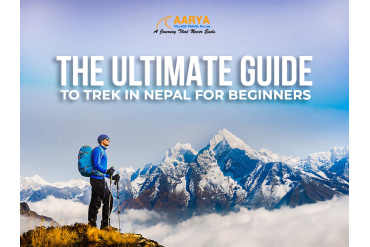Ultimate Guide to Preparing for the Everest Base Camp Trek
The Everest Base Camp (EBC) trek is a bucket-list adventure, offering the chance to get up close to Mount Everest and immerse yourself in Nepal’s breathtaking Himalayan landscape. However, it’s not just a simple trek – reaching Everest Base Camp takes careful planning and thorough preparation. Here’s everything you need to know, from crafting the perfect itinerary and packing list to understanding altitude sickness and budgeting for the journey.
Choosing the Right Everest Base Camp Trek Itinerary
The standard Everest Base Camp trek itinerary is designed to give trekkers both the experience of trekking in the Himalayas and enough time to acclimatize properly. Generally, this trek takes around 12-14 days, with additional acclimatization days along the way. You’ll start by flying from Kathmandu to Lukla, a small mountain airport, before trekking onward to Phakding. The following day brings you to Namche Bazaar, where you’ll spend an acclimatization day to adjust to the higher elevation. After Namche, the trek leads you through beautiful mountain villages like Tengboche and Dingboche, each offering unique views of the surrounding peaks. The final push includes a stop at Lobuche before reaching Gorak Shep, and from there, you’ll trek to Everest Base Camp. The return journey follows the same route back to Lukla, capping off an unforgettable adventure. Including acclimatization days ensures you’re ready to handle the altitude, reducing your risk of altitude sickness, a crucial consideration on this high-altitude trek.
Packing Essentials for Everest Base Camp
A well-thought-out packing list can make or break your experience. For clothing, focus on layers that you can adjust as temperatures fluctuate. Bring base layers, a warm fleece, an insulated jacket, and a waterproof shell to stay comfortable through diverse weather. Sturdy, well-broken-in hiking boots with ankle support are a must, as are trekking poles, which help with stability on rocky, uneven terrain. Pack a sleeping bag rated for temperatures as low as -10°C since teahouses along the trek route can get cold, especially at night. In your backpack, include essentials like water bottles, purification tablets, a headlamp, and basic toiletries. A comprehensive first aid kit with altitude sickness medication is also wise, along with blister care, pain relievers, and sunscreen. Striking a balance between packing light (ideally under 15 kg) and being prepared will make each trekking day more manageable.
Understanding Everest Base Camp Weather Conditions
Weather in the Himalayas can be unpredictable, but certain times of year are generally better for trekking. The most popular seasons are pre-monsoon (March-May) and post-monsoon (September-November), with spring offering warmer days and blooming rhododendrons, while autumn brings stable weather and the clearest views. Winter treks are possible but challenging due to the cold, and heavy snowfall can close high-altitude trails. The monsoon season from June to August brings rain and cloud cover, making trekking more difficult and limiting visibility. Checking the Everest Base Camp weather forecast before your departure is essential, but prepare for all conditions, especially sudden temperature drops at night and higher altitudes.
Altitude Sickness and How to Manage It
Altitude sickness is one of the main challenges of the EBC trek, and it typically begins to affect trekkers around Namche Bazaar (3,440 meters) and beyond. Symptoms like headaches, nausea, fatigue, and dizziness are common signs. Managing altitude sickness effectively is critical to ensure a safe and enjoyable experience. Trekking slowly is key, as is staying hydrated and avoiding alcohol and caffeine. Many trekkers also take preventative medications, such as Diamox, but it’s essential to consult your doctor before the trek. If symptoms persist, descending to a lower altitude is the safest option. Rest days included in your itinerary, like those at Namche Bazaar and Dingboche, are vital for acclimatization and significantly reduce your risk of serious altitude sickness.
Budgeting for the Everest Base Camp Trek
The cost of an Everest Base Camp trek can vary depending on the level of comfort you choose and the services you include. Generally, you’ll need around $50-60 for permits, including the Sagarmatha National Park entry fee. Hiring a guide and porters, which is highly recommended, will add to your budget. Guides typically charge around $25-30 per day, while porters cost around $15-20. Accommodation in teahouses is affordable, generally around $5-10 per night, although rates increase at higher altitudes. Meals cost around $20-30 per day, depending on your choices. Another major expense is the Kathmandu-Lukla round-trip flight, which costs approximately $350-400. A budget-friendly EBC trek can be completed for around $1,000 to $1,500, but luxury options with added comforts like an Everest base camp heli trek and higher-end lodges can easily exceed $3,000.
Training and Physical Preparation
Trekking to Everest Base Camp requires a moderate to high level of fitness. Physical preparation, ideally starting 2-3 months before departure, will make the trek more enjoyable and less taxing. Cardio training, such as running, cycling, or swimming, will build endurance, while strength training with an emphasis on your legs will prepare you for the inclines. Practicing with a loaded backpack on day hikes will help you get comfortable with the weight. If possible, high-altitude training is also beneficial, as it lets you experience reduced oxygen levels similar to what you’ll encounter on the trek.
The Everest Base Camp Trek Route and Highlights
The EBC trek route is a journey through the Khumbu Valley, home to the Sherpa community and Himalayan monasteries. The route largely follows the Dudh Kosi River valley before rising to meet the Khumbu Glacier. Highlights along the way include Namche Bazaar, a vibrant town with cafes, shops, and a friendly atmosphere; Tengboche Monastery, an iconic Buddhist site; and Kala Patthar, where you’ll enjoy some of the best sunrise views over Everest and the surrounding peaks. Although Everest isn’t directly visible from Base Camp, standing at the foot of the world’s tallest mountain is a once-in-a-lifetime experience. Following an itinerary with a knowledgeable guide is recommended, especially for beginners, as they ensure your safety and provide enriching cultural insights along the way.
Everest Base Camp for Beginners
If you’re wondering if the Everest Base Camp trek is suitable for beginners, the answer is yes – with proper preparation. Beginners should focus on building their physical stamina and consider hiring a guide who can help pace the trek and assist with any challenges. Mental readiness is just as important, as the trek involves long days of walking and adjusting to high altitudes. With the right mindset, a solid training plan, and extra days for acclimatization, even first-time trekkers can complete this journey.
Best Time to Trek Everest Base Camp
Timing is essential for a successful trek to Everest Base Camp. Spring and autumn are the ideal seasons due to favorable weather and clear skies, which enhance visibility and trail conditions. Winter offers solitude but can be extremely challenging due to the cold. Monsoon season is generally avoided, as heavy rains and cloud cover make trails slippery and limit scenic views. Regardless of when you choose to go, it’s a good idea to build in a few buffer days, especially given that flights to and from Lukla are often delayed or canceled due to weather conditions.
Final Tips for a Successful EBC Trek
A few additional tips can enhance your Everest Base Camp preparation. Consider adding buffer days to your schedule to accommodate possible delays, especially if you’re on a tight timeline. Staying connected may be important for some; while Wi-Fi is available at most teahouses, it can be slow and unreliable, so a local SIM card is recommended. Lastly, be mindful and respectful of the local Sherpa culture. The Khumbu Valley is rich with history, and taking time to appreciate the customs and beliefs of the Sherpa community will add depth to your experience.
Trekking to Everest Base Camp is a physically and mentally rewarding adventure that allows you to experience one of the world’s most remarkable landscapes. With the right preparation, equipment, and a positive attitude, you’ll be ready to embrace the journey and make lasting memories along the way.







